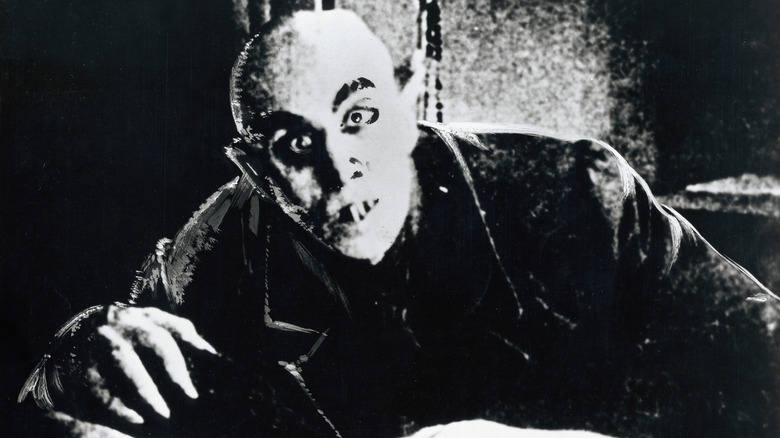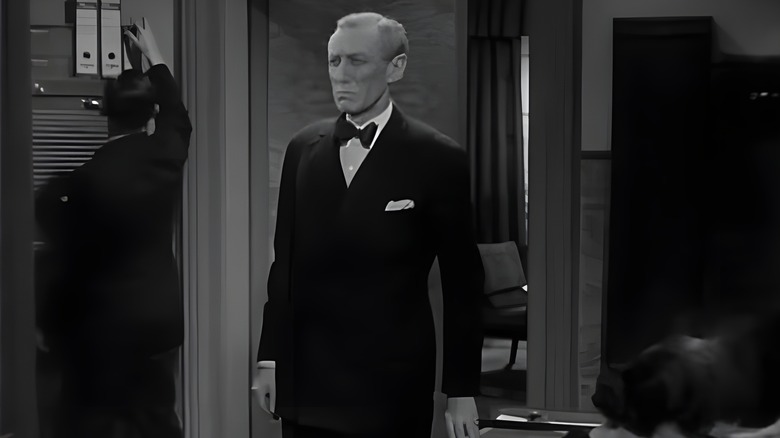What Nosferatu's Count Orlok Looks Like In Real Life
In 1922, F.W. Murnau's "Nosferatu: A Symphony of Horror" chilled moviegoers to their cores with the introduction of cinema's first vampire, the horrifying Count Orlok. While initially created as an unauthorized take on the titular bloodsucker from Bram Stoker's 1897 novel "Dracula," Orlok has achieved his own level of iconography. Unlike later characterizations of Dracula, through the performances of Bela Lugosi and Christoper Lee, Orlok is given no hint of charm or seduction, coming across as an item to fear without question. This was thanks, in large part, to the striking appearance and effortless talent of Orlok's actor, Max Schreck.
Resembling the plague-carrying rats that accompany him in his coffin on his way to Wisborg, Orlok's jagged teeth, darkened elongated fingers, and pointy ears complement his distinct silhouette. Schreck's 6' 3" height made him the perfect candidate to embody the Count's imposing stature. Combined with the stellar design and makeup work by the film's producer Albin Grau, Schreck successfully transformed from a lanky actor to a symbol of horror who remains as eerie today as he did over 100 years ago.
Schreck's performance birthed some wild legends
Berlin-born Max Schreck began acting in the late 1910s and early 1920s, with his role as Count Orlok in "Nosferatu" being among his first few roles. He once again collaborated with director F. W. Murnau on the 1924 comedy, "The Grand Duke's Finances." Outside of this, Schreck mostly played small roles before his death due to heart failure in 1936. Given the mystery surrounding the actor and his knack for playing grotesque characters, some critics and audiences at the time speculated if Schreck was an actual vampire. Of course, Schreck was very much a part of the living, but that didn't stop the rumor from becoming ingrained into Hollywood legend.
The hearsay reached its peak in 2000 with the release of the film "Shadow of the Vampire." Starring Willem Dafoe in an Oscar-nominated performance as Schreck, the film depicts a fictionalized account of the production of "Nosferatu." In it, those working on the film become dubious of Schreck's over-ambitious performance as Orlok, with some of the crew members even being killed by him as a vampire. The critically acclaimed film, even if clearly not intended to be a straight-up biography, acts as the ultimate love letter to Schreck and the legacy left behind by his iconic character.

